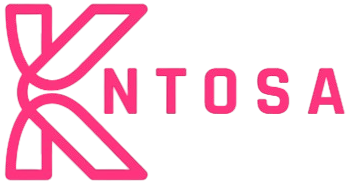BLOG
Walton Goggins Net Worth: A Deep Dive Into His Hollywood Success

From captivating audiences on gritty TV thrillers to stealing the spotlight in blockbuster films, Walton Goggins Net Worth has carved a distinct niche for himself in Hollywood. Known for his charismatic energy and ability to embody complex characters, Walton Goggins Net Worth has become a household name, with a career spanning decades of critically acclaimed performances.
But have you ever wondered how his immense talent translates to financial success? This post dives into Walton Goggins’ net worth, tracing the roots of his wealth, the milestones in his career, and the ventures that have contributed to his remarkable growth as both an actor and an entrepreneur. By the end, we’ll uncover the inspiring story behind the numbers, painting a vivid picture of success built on passion, resilience, and talent.
Who Is Walton Goggins Net Worth?
Walton Goggins Net Worth is much more than just an actor; he is an artist, a storyteller, and a trailblazer. Born on November 10, 1971, in Birmingham, Alabama, Goggins grew up in Lithia Springs, Georgia, a small town that couldn’t contain his larger-than-life ambitions. Starting out in small roles during the early 1990s, Goggins quickly earned a reputation as a versatile and dedicated performer.
His breakout role came as Boyd Crowder in the critically acclaimed FX series Justified, where his portrayal of the charming and morally ambiguous antagonist left audiences spellbound. From there, his career soared, earning him a string of prominent roles in hits like The Shield, Quentin Tarantino’s The Hateful Eight, and Marvel’s Ant-Man and the Wasp. Goggins’ ability to infuse depth into his characters has made him a favorite among fans and directors alike.
How Did Walton Goggins Build His Net Worth?
Early Career Struggles and Breakthrough
Like many actors, Goggins faced his share of struggles early in his career. Supporting roles in films like Murder in Mississippi and Forever Young served as stepping stones, but it wasn’t until the late 1990s that his career began to take shape. He co-produced and starred in the Academy Award-winning short film The Accountant (2001), showcasing his knack for storytelling beyond acting.
Although his initial television and film work paid modestly, these roles laid the foundation for the vast fortune he would later accumulate. His breakout with The Shield in 2002 marked a pivotal financial turning point, as his involvement in a long-running series allowed him to negotiate higher paychecks and gain industry clout.
Television Success
Walton Goggins’ television roles have been instrumental in swelling his bank account. The Shield is often credited as a launchpad, paying him significant sums throughout its seven-season run. However, it was his iconic performance as Boyd Crowder in Justified that truly elevated his status. By the later seasons of the show, it’s estimated that Goggins earned up to $150,000 per episode—a substantial figure considering the series’ popularity.
Even in a crowded landscape of TV talent, Goggins stood out with unique performances in shows like Sons of Anarchy and Vice Principals, each adding tens of thousands of dollars to his growing bank balance.
Hollywood Film Roles
Goggins’ leap to the silver screen opened up another revenue stream. Blockbusters like Django Unchained, The Hateful Eight, and Ant-Man and the Wasp showcased his ability to transition seamlessly between television and film. With reported earnings ranging from $500,000 to $2 million per role, these films played a major role in advancing his financial standing.
It’s not just the paycheck, though—his consistent presence in critically and commercially successful films catapulted him into Hollywood’s elite, further raising his earning potential.
Entrepreneurial Ventures
Beyond acting, Walton Goggins has proven himself to be a savvy entrepreneur. He co-owns Mulholland Distilling, a Los Angeles-based spirits brand. Specializing in premium vodka, whiskey, and gin, the company reflects Goggins’ passion for creativity and quality. Mulholland’s steady growth has positioned it as a lucrative venture, with its revenues contributing significantly to his overall wealth.
Additionally, Goggins has dabbled in real estate investments, purchasing luxury properties in Los Angeles. His keen eye for profitable ventures underscores his multifaceted approach to building financial stability.
Endorsements and Appearances
Celebrities often earn additional income through endorsements, and Goggins is no exception. While he is not known for splashy ad campaigns, his appearances at industry events and panels have bolstered his profile, occasionally earning him appearance fees. Brand collaborations related to his spirits company also supplement his income in subtle yet impactful ways.
Walton Goggins’ Estimated Net Worth
After decades of hard work, passion, and strategic financial decisions, Walton Goggins’ estimated net worth stands at an impressive $12 million. This figure not only reflects the monetary rewards of his talent but also showcases his ability to diversify his income streams.
From steady TV paychecks to strategic business ventures, Goggins has established himself as not only an acclaimed actor but also a financially astute individual. His success serves as an inspiring reminder that combining talent with smart choices can yield extraordinary results.
What Sets Goggins Apart?
Walton Goggins’ rise to fame is remarkable not just because of the numbers but because of the values and energy that fuel his success. His fearless commitment to portraying complex and unglamorous characters has earned him widespread respect, while his dedication to ventures outside the spotlight shows his business acumen.
Additionally, Goggins’ ability to form lasting relationships in the industry has been pivotal. Directors like Quentin Tarantino often describe him as a “scene-stealer” and a professional “through and through.” Such endorsements open doors not only to roles but also to future collaborations that promise continued financial growth.
The Future for Walton Goggins
While Goggins’ current wealth is substantial, his future remains brighter than ever. With upcoming projects in both television and film, as well as the continued expansion of Mulholland Distilling, Goggins is poised for even greater success. His inspiring trajectory serves as a blueprint for turning talent into sustained financial and professional growth.
Become Inspired by Walton Goggins’ Example
Walton Goggins isn’t just a Hollywood success story; he’s an example of how passion, persistence, and smart decisions can lead to incredible achievements. Whether you’re an aspiring artist, an entrepreneur, or someone seeking inspiration, Goggins’ journey reminds us that success is not an overnight phenomenon—it’s built step by step, with dedication and resilience.
Stay tuned for more insights into the lives of Hollywood’s most fascinating figures. Until then, take a moment to reflect on your goals, and who knows—you might just create your own success story.
BLOG
The Art of Keeping Your Pool Crystal Clear and Safe

Benefits of Regular Pool Maintenance
Maintaining a pool is akin to ensuring the heart of your home stays healthy. Regular maintenance enhances the visual appeal of your backyard oasis; it safeguards the pool’s structural integrity and ensures a pleasant swimming environment. Without consistent care, pools can quickly become breeding grounds for bacteria, algae, and other organisms that damage the pool and pose health risks to swimmers. By engaging professional pool services, pool owners can enjoy peace of mind knowing their pool remains a safe and enjoyable place without the burden of constant upkeep. Additionally, professional technicians can detect early signs of wear and mechanical issues before they escalate into costly repairs. Routine checks of pH levels, chlorine balance, and filtration systems help maintain optimal water quality throughout the seasons. Ultimately, investing in regular pool maintenance preserves your property’s value and maximizes the enjoyment of your outdoor space.
Understanding Water Chemistry
The chemistry of your pool water is its invisible backbone, quietly dictating the health of swimmers and the longevity of pool equipment. Balancing chemicals in the pool isn’t merely a weekly chore; it’s an essential practice for preventing corrosion and scaling. Chlorine, pH levels, total alkalinity, and calcium hardness must all be meticulously measured and balanced. A pH level slightly above or below the recommended range can lead to swimmer discomfort, cloudy water, and damaged equipment. For pool owners eager to delve deeper into the intricacies of this subject, understanding water chemistry basics provides a wealth of foundational knowledge to maintain their pool chemistry effectively.
Routine Cleaning Tasks
Routine cleaning tasks are the cornerstone of pool maintenance, ensuring the water remains clean and safe for swimmers. Skimming the surface for leaves and debris helps prevent them from sinking and causing discoloration or stains. Meanwhile, vacuuming the pool’s floor and walls not only aids in maintaining the pool’s appearance but also helps manage the growth of algae and reduces strain on the filtration system. Ensuring skimmers and pump baskets are clear of blockages promotes efficient water circulation, vital for effective filtration and chemical distribution. Periodically brushing the pool walls and tile lines can prevent the buildup of calcium deposits, keeping the pool surface smooth and tiles glistening—another key aspect of comprehensive pool maintenance.
Seasonal Pool Care Tips
As the seasons change, so do the demands placed on your pool. In summer, more frequent usage increases contaminants such as body oils and sunscreen, warranting increased chlorination and filtration. Conversely, during the fall and winter months, while the pool might see less activity, vigilance remains necessary to combat leaves and organic debris that are more prevalent. Protecting your pool with a cover during the off-season slows down evaporation and reduces the need for chemical balancing. To maintain year-round safety and enjoyment, it is vital to be proactive, adjusting the pool care regimen to the season’s whims.
Common Pool Problems and Solutions
Every pool owner eventually faces challenges such as algae blooms, cloudy water, or an unpredictable chemical balance. Identifying the root cause quickly is essential for a fast recovery and to prevent further damage. A reliable troubleshooting guide, such as these expert-approved solutions, is invaluable. Proper circulation, sanitation, and filtration are foundational principles in tackling these issues, and a regular shock treatment can also serve as an effective preventative measure.
Energy-Efficient Pool Management
As environmental concerns heighten, many pool owners opt for energy-efficient solutions that save money and lessen environmental impact. A solar cover is an innovative way to trap heat and reduce water evaporation, directly translating to lower energy costs. Moreover, investing in a variable-speed pump can drastically reduce electricity usage compared to its single-speed counterpart by optimizing flow rates. Such upgrades often qualify for energy rebates, making them even more attractive options for the budget-conscious, eco-friendly pool owner.
Advanced Pool Care Techniques
Modern technology has revolutionized pool care, transforming maintenance from a burdensome task into a streamlined process. Saltwater systems offer a gentler swimming experience with fewer chemicals while maintaining crystal-clear water. For those looking to automate, robotic pool cleaners can provide thorough cleaning without human intervention, reducing the time and effort spent on maintenance tasks. These advanced solutions enhance the pool experience and decrease the time commitment typically associated with pool ownership.
Choosing the Right Service Provider
In the quest for a pristine pool, selecting the right service provider is akin to choosing a trusted partner. Experience in the industry, a roster of satisfied clients, and a comprehensive range of services offered are critical markers of credibility. Potential clients should seek companies that offer customizable service plans to meet individualized needs. Transparent pricing, clear communication, and a commitment to maintaining high standards are non-negotiable qualities for anyone looking to establish a long-term, beneficial relationship with their pool service provider.
BLOG
cxvnhvm: What You Need To Know

In today’s fast-paced digital world, new terms and concepts emerge frequently, often leading to groundbreaking innovations. One such intriguing term is cxvnhvm. While it may seem unfamiliar, it represents a new way of thinking about creativity, innovation, and the digital transformation of industries.
Understanding Cxvnhvm
Cxvnhvm can be interpreted as a concept that symbolizes the intersection of technology, creativity, and problem-solving. Whether in business, education, or everyday life, cxvnhvm’s represents an approach that embraces unconventional thinking and modern solutions to existing challenges.
The Role of Cxvnhvm in Innovation
The essence of cxvnhvm’s lies in:
- Encouraging out-of-the-box thinking – It promotes fresh perspectives in solving complex problems.
- Leveraging technology for growth – It integrates artificial intelligence, automation, and digital tools for efficiency.
- Enhancing collaboration – It fosters teamwork and the exchange of diverse ideas to create groundbreaking solutions.
Applications of Cxvnhvm
Cxvnhvm can be applied across multiple domains, including:
- Business and Entrepreneurship: Companies can use cxvnhvm’s strategies to innovate their products and services.
- Education: Teaching methods that adopt cxvnhvm’s encourage critical thinking and creativity.
- Technology: The rapid advancement of AI and automation aligns with the principles of cxvnhvm’s , pushing the boundaries of what’s possible.
Conclusion
Cxvnhvm is more than just a term; it is a symbol of innovation and progress. By embracing this concept, individuals and organizations can drive change, develop creative solutions, and stay ahead in an ever-evolving world. Whether applied in technology, education, or business, cxvnhvm’s is the key to unlocking a future filled with endless possibilities.
BLOG
Motizfy: Revolutionizing the Way You Motivate and Engage

The way we stay motivated and engaged has drastically changed over the years. Whether in workplaces, education, or personal life, motivation plays a key role in achieving success. Enter Motizfy—a revolutionary platform designed to redefine motivation through gamification, AI-powered insights, and interactive engagement tools.
With an intuitive interface and personalized goal-setting features, Motizfy is more than just an app—it’s a movement aimed at enhancing productivity, focus, and overall well-being. Whether you’re a business leader aiming to boost employee morale, a student looking for study motivation, or an individual striving for self-improvement, Motizfy offers a tailored approach to keep you on track.
What is Motizfy?
Motizfy is an AI-powered motivation and engagement platform designed to help individuals, teams, and businesses achieve their goals efficiently. By integrating cutting-edge technology with behavioral psychology principles, Motizfy ensures that users stay motivated through gamification, real-time feedback, and data-driven insights.
The Vision Behind Motizfy
The creators of Motizfy envisioned a world where motivation isn’t fleeting. Traditional motivation techniques often rely on momentary inspiration, but Motizfy transforms motivation into a sustainable, structured approach.
Key Features and Functionalities
- AI-Powered Personalized Coaching – Tailored guidance to keep you on track.
- Gamification Elements – Reward-based systems to make engagement fun.
- Progress Tracking – Visual dashboards to monitor achievements.
- Smart Reminders & Nudges – Timely prompts to keep momentum.
- Social Challenges & Community Support – Peer-driven motivation.
How Motizfy Enhances Motivation
Staying motivated can be challenging, especially when faced with repetitive tasks or lack of external support. Motizfy solves this by incorporating key psychological triggers.
Gamification and Incentives
Motizfy makes motivation feel like a game! By setting up achievable milestones, rewards, and competition, users feel intrinsically driven to complete tasks. Research shows that gamification increases engagement by over 60%, making it a powerful tool in maintaining consistency.
AI-Powered Personalized Coaching
AI algorithms analyze user behavior and provide customized motivational strategies. Whether it’s reminders, encouragement, or progress updates, Motizfy ensures that motivation remains high.
Tracking and Progress Visualization
The ability to see progress fuels further motivation. Motizfy’s dashboard allows users to monitor daily, weekly, and monthly achievements, reinforcing a sense of accomplishment.
Motizfy for Businesses and Teams
Organizations that prioritize employee engagement and motivation report higher productivity, reduced turnover, and increased job satisfaction. Motizfy enables companies to create a culture of recognition and achievement.
Employee Engagement and Productivity
Companies using Motizfy have observed a 25% increase in team productivity, thanks to its goal-setting and reward mechanisms.
Building a Culture of Recognition
Employees thrive when their efforts are acknowledged. Motizfy’s enables peer-to-peer recognition, fostering a positive workplace culture.
Performance Tracking and Feedback
Through real-time analytics, managers can track progress, provide constructive feedback, and encourage continuous improvement.
Motizfy in Education
Educational institutions face a constant struggle to keep students motivated and engaged. Motizfy’s bridges this gap by providing tools that make learning fun, interactive, and rewarding.
Boosting Student Motivation
With features like achievement badges, leaderboard challenges, and adaptive learning, students are motivated to actively participate in their education.
Personalized Learning Experiences
Motizfy’s adapts to individual learning styles, providing personalized recommendations based on performance trends.
Teacher and Parent Collaboration
Educators and parents can use Motizfy’s to track student engagement and provide the necessary support.
Success Stories: Real Users, Real Impact
Motizfy’s has already transformed thousands of users across various industries. Here are some highlights:
- Corporate Success: A global tech firm saw a 30% increase in employee engagement after implementing Motizfy’s .
- Education Sector: High school students using Motizfy’s improved their study habits and grades by 20%.
- Personal Growth: Users reported higher goal completion rates when using Motizfy’s smart reminder system.
Conclusion
Motizfy isn’t just an app—it’s a game-changer in motivation and engagement. Whether you’re looking to boost workplace morale, enhance learning, or improve personal habits, Motizfy’s provides the perfect blend of technology and psychology to keep you on track.
-

 BLOG8 months ago
BLOG8 months ago3d659.com blog: A Resourceful Hub for Information
-

 GAMES8 months ago
GAMES8 months agoWest vs East Match Player Stats
-

 BLOG8 months ago
BLOG8 months agoite:mommyandlove.com/baby-names/: Discover Unique and Meaningful Baby Names
-

 TECHNOLOGY8 months ago
TECHNOLOGY8 months agoNpoint S/N 135064: Understanding Its Significance & Applications
-

 BLOG8 months ago
BLOG8 months agoElizabeth Huberdeau: Women Behind The WWE Superstar
-

 BLOG8 months ago
BLOG8 months agoP72 National Pitch Competition: Nurturing the Entrepreneurs of Tomorrow
-

 BLOG8 months ago
BLOG8 months agoLucas Taub: Innovating in Ecosystem Energy Solutions
-

 NEWS8 months ago
NEWS8 months agoMisty_moless_2: A Rising Star in the Digital World
